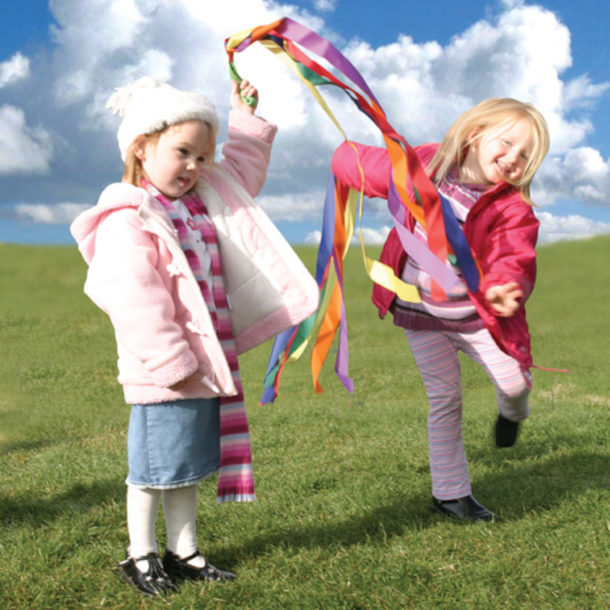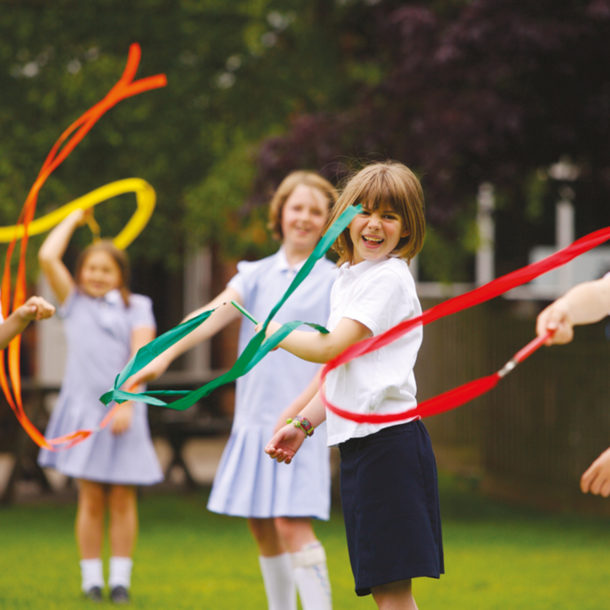Making the most of a windy day
Why stay inside on a windy day? Explore the power, direction and sound of a windy day. Listen to wind as it rattles around the school. Watch the trees sway and the leaves blow about. Hold on tight to sparkling fabrics as the wind catches them and the fabric takes flight!
- Allow children to feel the power of the wind by running against it holding a large piece of card. Try it with and without and feel the difference.
- Take a walk and spot the effects of the wind on the environment – fallen leaves, twigs etc.
- Make kites or pinwheels and try them out.
- Talk about harnessing wind power. Have children seen wind turbines? Some people think they are ugly and spoil the look of the environment; others think they are beautiful. What do the children think?
- Investigate weather vanes. What is their purpose? Where might you see one? Some are incredibly decorative works of art, others are much simpler. Design and/or make one.
- Create wind chimes. Very simple ones can be made using an upside-down paper cup. Thread lengths of string with buttons, conkers, jingly bells etc., attach them to the cup and hang somewhere suitable – perhaps from a tree?
- Scarves or pieces of fabric and ribbons attached to hoops – hold tight and watch as the wind catches the fabric and ribbon and it blows about in the air.
- Wind socks – if you have a wind sock, watch it come alive by running and letting the breeze catch it?
- Make music – take simple musical instruments outdoors such as tambourines, maracas and triangles outdoors, listen how the sounds travel in the wind. Boomwackers are great for making music outdoors.
- Make kites or pinwheels and try them out.
- Leaf Art – collect fallen leaves – thread them, print with them, make natural collages or simply draw/paint on them.
- Read ‘The Wind’ by Robert Louis Stevenson. Can children spot the repeated refrain in the poem below? They might draw or paint their own version of what the wind could look like, write their own windy poems or add music to create a song!
I saw you toss the kites on high
And blow the birds about the sky;
And all around I heard you pass,
Like ladies’ skirts across the grass –
O wind, a-blowing all day long,
O wind, that sings so loud a song!
I saw the different things you did,
But always you yourself you hid.
I felt you push, I heard you call,
I could not see yourself at all –
O wind, a-blowing all day long,
O wind, that sings so loud a song!
O you that are so strong and cold,
O blower, are you young or old?
Are you a beast of field and tree,
Or just a stronger child than me?
O wind, a-blowing all day long,
O wind, that sings so loud a song!
‘The Wind’ by Robert Louis Stevenson.















